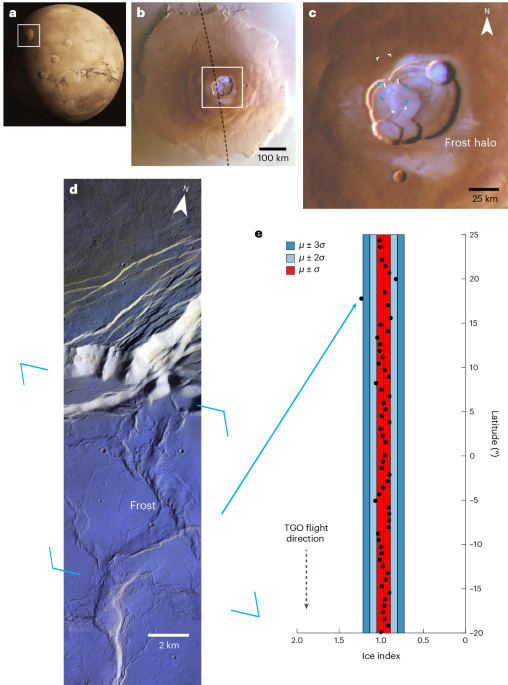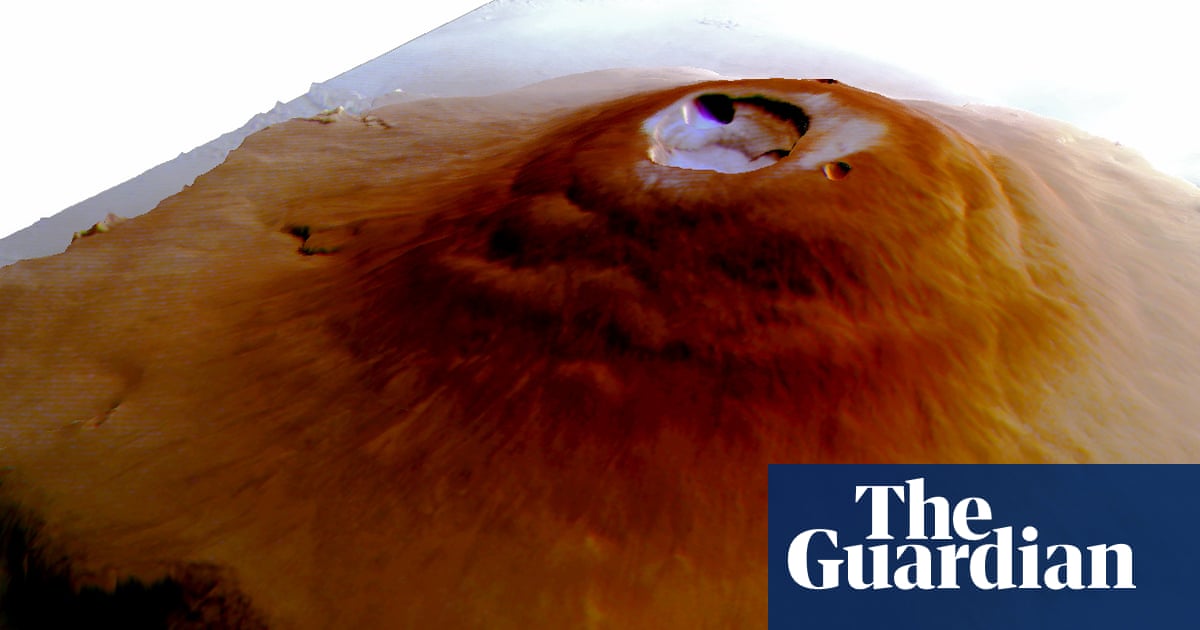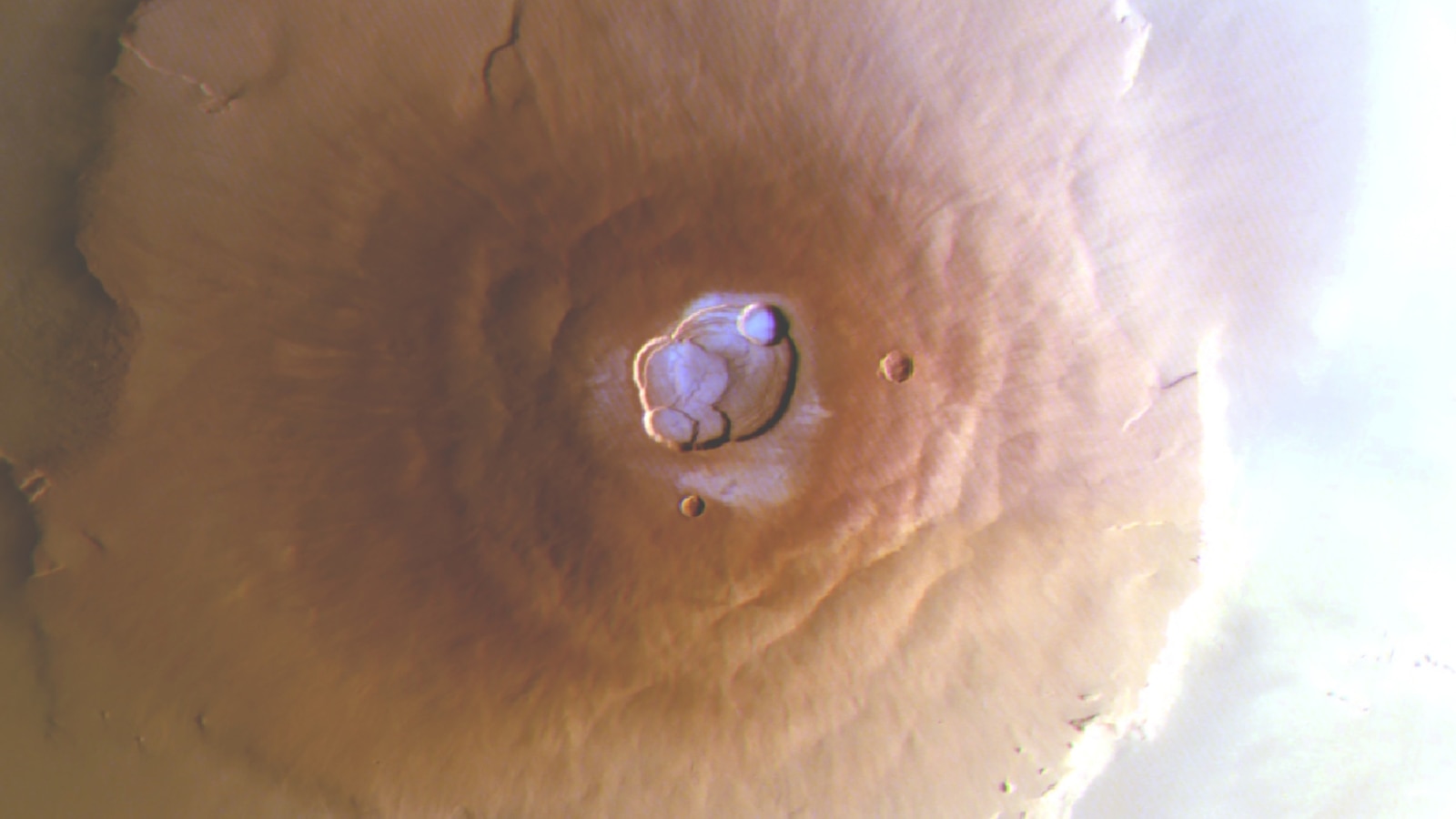The latest discovery reveals that some of Mars’s tallest mountains in the Tharsis region, experience early morning frost in their summit craters. This frost is a delicate layer of water ice, forms overnight and evaporates shortly after sunrise.

Also Read: NASA Launches 3D Instagram Filter to Experience Universe in AR
Frost detected on the caldera floor and northern rim of Olympus Mons, the tallest volcano in the solar system.
High-resolution CaSSIS color images with a resolution of 4.5 meters per pixel revealed the frost. The well-lit, steep slopes of the volcano showed no signs of frost.
Olympus Mons is 16 miles (26 kilometers) high and 374 miles (602 kilometers) in diameter, dwarfing Earth’s largest volcano, Mauna Loa. The entire Hawaiian island chain could fit inside Olympus Mons.
Water frost was discovered in a region previously believed to be too warm for such deposits, suggesting that water might be more distributed across Mars than previously thought.
This discovery indicates that water can potentially be found almost anywhere on the planet’s surface, contrary to earlier assumptions that it was mostly limited to the polar ice caps and mid-latitudes.
The large calderas at the summit of the volcanoes create unique microclimates that facilitate the formation of frost.
These bowl-shaped depressions formed by volcanic activity allow for specific conditions that enable frost deposition. The frost forms during the early morning and in colder months.
The detection of water frost near the equator indicates that Mars’s water cycle is more complex than previously understood.
The presence of frost in equatorial regions suggests that Mars’s climate in the past may have supported glaciers on these volcanoes.
The study analyzed about 5,000 images taken by CaSSIS, a high-definition camera aboard the ExoMars Trace Gas Orbiter, a collaboration between the European Space Agency (ESA) and the Russian space agency Roscosmos.
Observations were corroborated using additional instruments like NOMAD, a spectrometer on the Trace Gas Orbiter and the High Resolution Stereo Camera (HRSC) on the ESA’s Mars Express orbiter.
The detailed images and specific timing of observations (early morning) were crucial for detecting the thin, transient frost deposits. This is the first major discovery from CaSSIS.
The frost layers are extremely thin, just one-hundredth of a millimeter thick, but they cover a vast area, amounting to an estimated 150,000 metric tons of water ice.
This amount of water is equivalent to about 60 Olympic swimming pools, showing the huge water content despite the frost’s minimal thickness.
The frost is only present during the night and early morning, sublimating back into the atmosphere as temperatures rise.
Harvesting this water would be difficult due to its transient nature and the challenging conditions of surface.
Understanding the distribution and behavior of water on Mars is critical for future human exploration and potential colonization.
This discovery adds to our knowledge of the Martian water cycle, which is less active than it was billions of years ago but still plays a crucial role in the planet’s climate and geology.
Also Read: Elephants Use Unique Names to Call Each Other, Study Reveals
The discovery was somewhat serendipitous, as researchers were initially searching for carbon dioxide frost.
Researchers not involved in the study such as John Bridges from the University of Leicester and J. Taylor Perron from MIT have highlighted the importance of this discovery in understanding climate and geological processes.
The frost formation process on Mars has similarities to Earth’s, where moist air can condense into frost at high altitudes.
The presence of frost in the Tharsis region is intriguing because it occurs near Mars’s equator, a region previously thought too warm for such phenomena.
Mars’s equator is home to the tallest volcanoes in the solar system including Olympus Mons and Arsia Mons, which are taller than Earth’s Mount Everest.
The frost is described as being thinner than a human hair, forms on the cold summits of these gigantic volcanoes during Mars’s colder months. The frost covers an extensive area on the mountain tops and rims of calderas.
The frost involves an amount of water equivalent to about 60 Olympic-sized swimming pools (approximately 150,000 tonnes). This water undergoes a daily cycle of deposition as frost and evaporation after sunrise.
This discovery is the first time water frost has been observed in equatorial regions. Previously, water ice had been detected primarily at the Martian poles.
The frost forms due to a unique atmospheric process where Martian winds carry moisture up the mountainsides into the calderas. These calderas create microclimates that allow frost to condense overnight.
The frost phenomenon could be a remnant of Mars’s ancient climate, suggesting that Mars might have had a wetter climate with precipitation and possibly even snowfall millions of years ago.
Olympus Mons is the tallest volcano in the solar system, standing nearly 16 miles (25 kilometers) high, which is about three times the height of Mount Everest.
Pavonis Mons and Arsia Mons is an other major volcanoes in this region, contributing to the region’s reputation for its enormous geological structures.
Despite the high daytime temperatures due to Mars’s thin atmosphere, the calderas’ microclimates allow temperatures to drop low enough at night for frost to form.
Winds on Mars carry moisture up the mountains, which condenses in the calderas to form frost. This process occurs during colder periods when the Martian atmosphere can support condensation.
Also Read: China’s Chang’e 6 Probe Successfully Lands on Far Side of the Moon






















